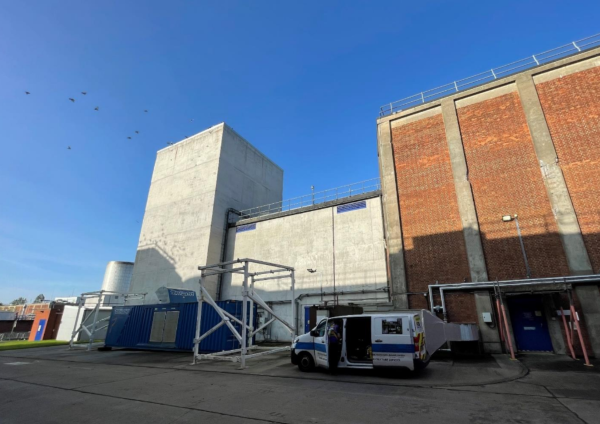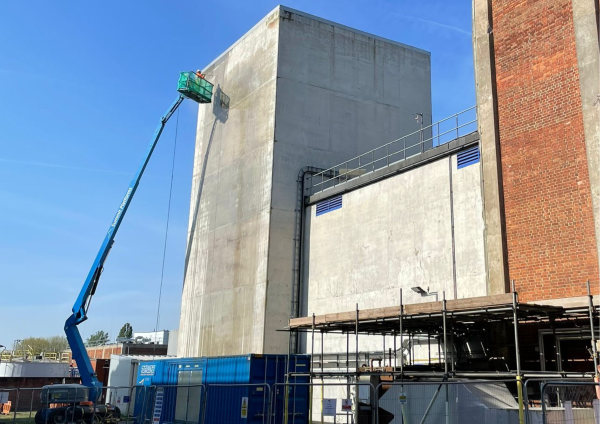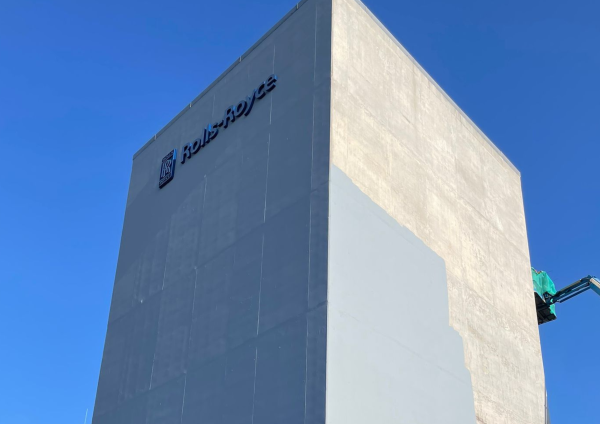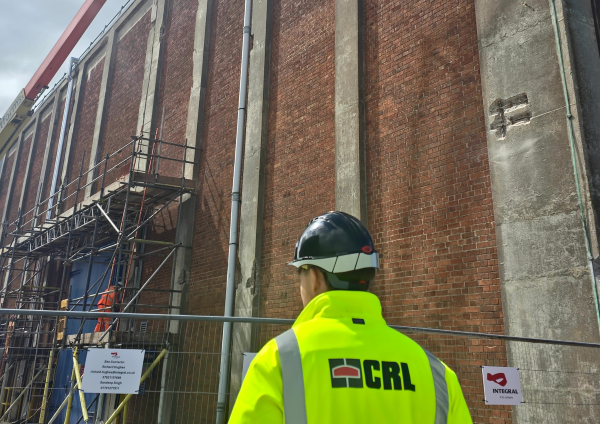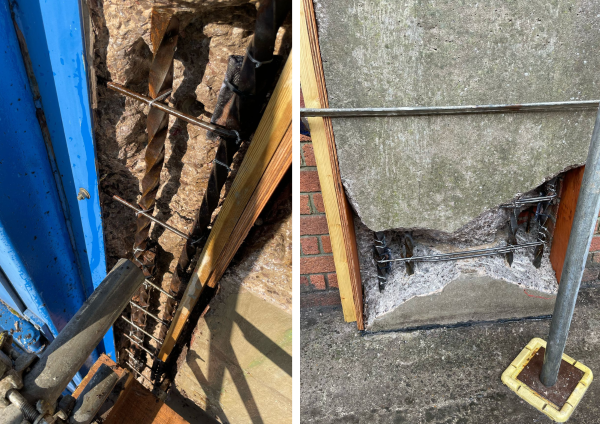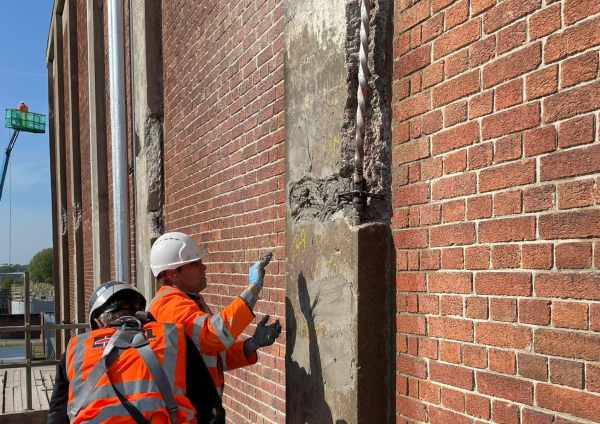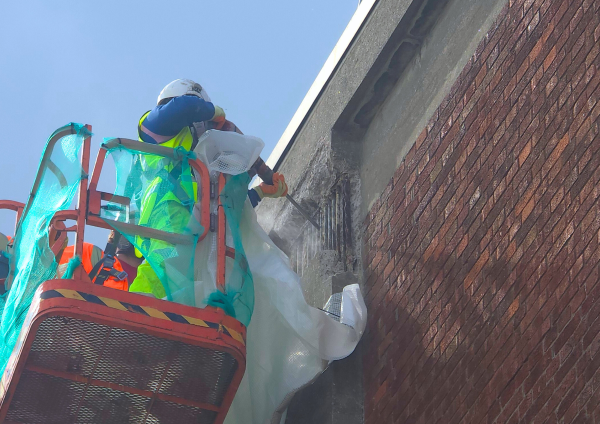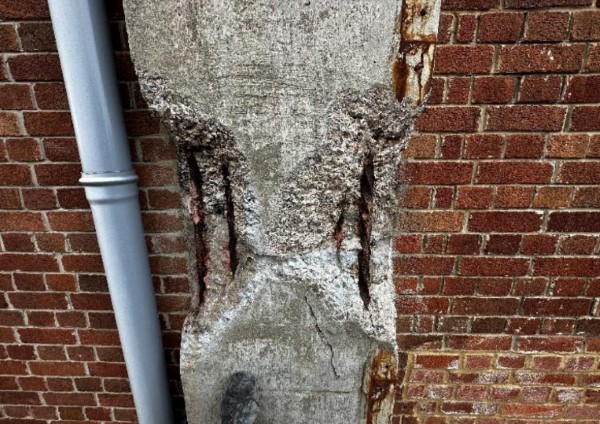Preserving a Legacy of Innovation at Rolls-Royce, Bristol
Roger Southwell
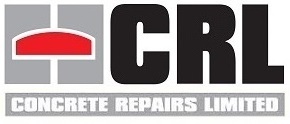
02/06/25
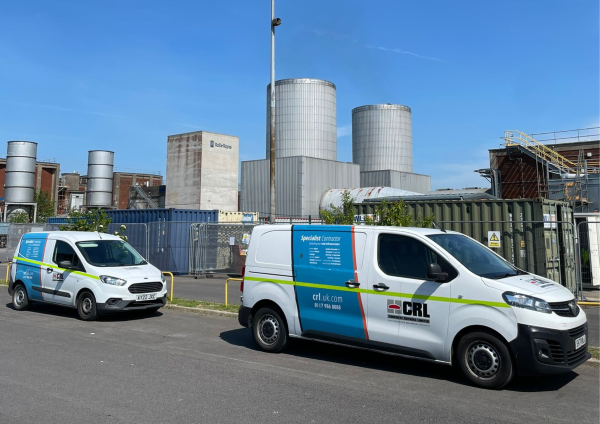
1 of 9
Following these findings, CRL Bristol was engaged in April 2025 to begin a comprehensive 27-week repair and restoration programme. The works will begin with cleaning the concrete to remove contaminants and deteriorated material. Defects will be marked out, reinforcement either treated or replaced as necessary, and the patches prepared and reinstated to their original profile.
In areas where long-term protection is required, Mapeshield I zinc anodes will be installed. These are sacrificial anodes designed to provide localised cathodic protection to reinforcing steel, helping to prevent future corrosion. This process does not constitute a full cathodic protection system but rather a targeted preventative measure integrated into the concrete repair strategy to preserve the structure.
Cracks will be sealed using resin injection techniques, and any surface imperfections will be smoothed with a fairing coat to match the original finish. Finally, an anti-carbonation coating will be applied to all exposed concrete surfaces, and all movement joints will be reinstated with a flexible sealant to accommodate any structural movement.
In areas where long-term protection is required, Mapeshield I zinc anodes will be installed. These are sacrificial anodes designed to provide localised cathodic protection to reinforcing steel, helping to prevent future corrosion. This process does not constitute a full cathodic protection system but rather a targeted preventative measure integrated into the concrete repair strategy to preserve the structure.
Cracks will be sealed using resin injection techniques, and any surface imperfections will be smoothed with a fairing coat to match the original finish. Finally, an anti-carbonation coating will be applied to all exposed concrete surfaces, and all movement joints will be reinstated with a flexible sealant to accommodate any structural movement.
With a heritage legacy stretching back to 1920, Rolls-Royce’s Bristol site has long been at the forefront of aero-engine innovation, from crafting the legendary radial engines of the interwar years to powering icons like the Concorde. Today, the site remains a hub for cutting-edge propulsion systems, supporting military aircraft such as the Eurofighter Typhoon and other advanced marine applications.
In 2023, CRL Surveys was commissioned by Integral UK Ltd to assess the condition of several buildings across the historic site. The survey revealed patch repairs masking hidden defects and signs of reinforcement corrosion in numerous areas. While most concrete cover depths met historical standards, many fell short by today’s benchmarks.
In 2023, CRL Surveys was commissioned by Integral UK Ltd to assess the condition of several buildings across the historic site. The survey revealed patch repairs masking hidden defects and signs of reinforcement corrosion in numerous areas. While most concrete cover depths met historical standards, many fell short by today’s benchmarks.
